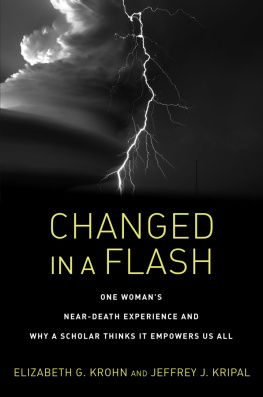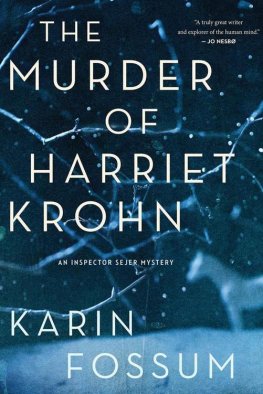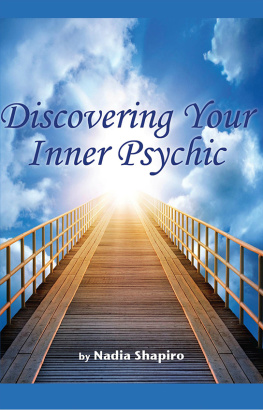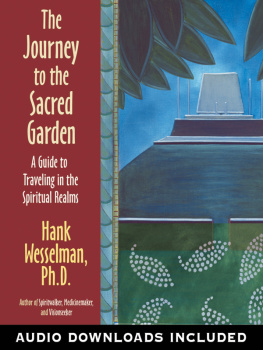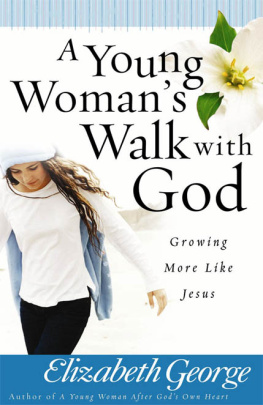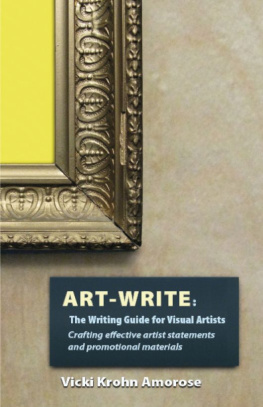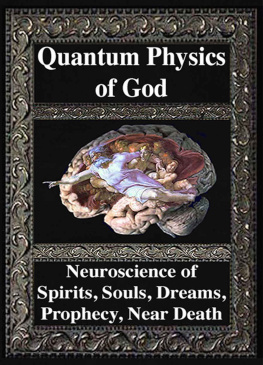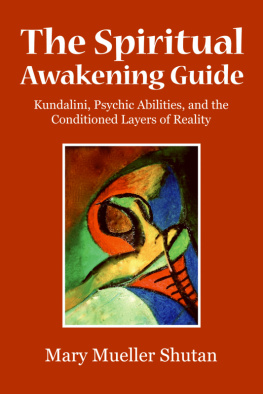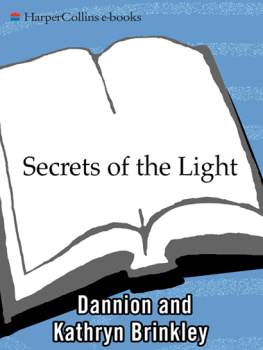
Copyright 2018 by Elizabeth G. Krohn and Jeffrey J. Kripal. All rights reserved. No portion of this book, except for brief review, may be reproduced, stored in a retrieval system, or transmitted in any form or by any meanselectronic, mechanical, photocopying, recording, or otherwisewithout the written permission of the publisher. For information contact North Atlantic Books.
Published by
North Atlantic Books
Berkeley, California
Cover image by John Finney photography/Getty Images
Cover design by Nicole Hayward
Book design by Happenstance Type-O-Rama
Printed in Canada
Changed in a Flash: One Womans Near-Death Experience and Why a Scholar Thinks It Empowers Us All is sponsored and published by the Society for the Study of Native Arts and Sciences (dba North Atlantic Books), an educational nonprofit based in Berkeley, California, that collaborates with partners to develop cross-cultural perspectives, nurture holistic views of art, science, the humanities, and healing, and seed personal and global transformation by publishing work on the relationship of body, spirit, and nature.
North Atlantic Books publications are available through most bookstores. For further information, visit our website at www.northatlanticbooks.com or call 800-733-3000.
Library of Congress Cataloging-in-Publication Data
Names: Krohn, Elizabeth G., author.
Title: Changed in a flash : one womans near-death experience and why a
scholar thinks it empowers us all / Elizabeth G. Krohn.
Description: Berkeley, California : North Atlantic Books, 2018. | Includes
bibliographical references.
Identifiers: LCCN 2018015402 (print) | LCCN 2018029106 (ebook) | ISBN
9781623173012 (e-book) | ISBN 9781623173036 (hardback) | ISBN
9781623173005 (pbk.)
Subjects: LCSH: Krohn, Elizabeth G. | Near-death
experiences.TexasHoustonBiography. | DeathReligious aspects. |
Future life.
Classification: LCC Bc10f045.N4 (ebook) | LCC Bc10f045.N4 K76 2018 (print) | DDC
133.901/3092 [B] dc23
LC record available at https://lccn.loc.gov/2018015402
North Atlantic Books is committed to the protection of our environment. We partner with FSC-certified printers using soy-based inks and print on recycled paper whenever possible.
For the four womenMarianne Greenfield, Minnie Duval, Francine Greenfield Rosenthal, and Clara Mae Lewiswhose support and love helped me to survive, and then to thrive.
A dream is one-sixtieth of prophecy.
Babylonian Talmud, Berakhot 57b
Introduction: Lightning in a Book
Late in the summer of 1988, Elizabeth Balkin (now Krohn), a wife and mother of two young boys, was struck by lightning in the parking lot of a Houston synagogue.
She did not die.
While the odds of getting struck by lightning (about one in a million in any single year) are significantly better than winning the lottery, surviving a lightning strike is not all that unusual. The survival rate from such an event is somewhere around ninety percent, which means that roughly nine out of ten people who are struck by lightning live to tell the harrowing tale. The energy of such an event boggles the imagination. A lightning bolt can carry as much as 200 million volts and travel at speeds that can approach nearly one-third the speed of light. Luckily, most of the energy travels over or around the human body in a flashover effect. This can also take the form of an eerie bubble of light within which time seems to stand still. Oddly, severe burns are not common for a variety of conductivity reasons, but many survivors often suffer significant changes to their biology. Limbs, muscles, nerves, even neurological patterns are often altered forever. And thats just the beginning. Some survivors report that they can now sense storms well before they appear; others that their computers malfunction, or that batteries drain away in their presence.
Things sometimes get stranger still. Elizabeths most fundamental understandings of what the world is and how it works were completely transformed. She was one person before the lightning strike. She was another after it. She was changed in a flash.
And in a garden. Elizabeth experienced herself visiting a heavenly landscape, in her case a garden paradise of unspeakable beauty, for two weeks, even though only minutes or seconds passed here. Such a near-death experience (NDE), of course, is not uncommon either. But Elizabeth came back with something else still: a rich body of messages or revelations about the nature and future of the human soul and a whole spectrum of new supersenses, including a troubling ability to dream the details of future disasters. Preposterous? Certainly to our ordinary, everyday experience of the world. Impossible? Well, we will have to wait and see.
I am a full professor at an elite research university. It is my job to push against all comfortable boundaries, to question any religious or secular assumption about who we are, to imagine the impossible as possible. Thats what tenure is for, and I take its privileges and responsibilities very, very seriously. This same professional position also affords me the honor and pleasure of teaching and thinking with some of the finest minds on the planet, from fields as diverse as the study of literature to computer science. I can thus easily understand how and why many of us might be tempted to call the following story bullshit. But here is the thing: over the last two decades, I have encountered hundreds of individuals like Elizabeth, and I am sure there are millions more. I understand the bullshit charge, as I once held it myself, but I am not so sure anymore. Anomalous superhumans like Elizabeth give me significant pause.
This is a book about one such long pause. It chronicles and then interprets a series of events that could not have possibly happened, but did. I am Elizabeths friend, cowriter, interpreter, and, at the very end of the book, one of the subjects of her paranormal dreaming. I write about Elizabeths otherworldly visions and precognitive dreams. She responds by dreaming my life, my family, and my Midwestern hometown. Not exactly your typical book. But this is how it came into focus as we completed the manuscript in the final months of 2017.
How This Book Came to Be
The project began in October of 2015, when I was asked to comment on Elizabeths near-death experience at a public event organized by a young man named Anyang Anyang and entitled Changed in the Blink of an Eye at the Institute for Spirituality and Health in the Houston Medical Center. From those initial introductions and conversations, the two of us decided to try to write a book together. We met on a regular basis from early 2016 through the fall of 2017. We also met with family members: Elizabeths former husband, Barry; her husband, Matt; her three children, Jeremy, Andy, and Mallory; and her parents, Marianne and Larry. With these individuals, I corroborated many of the details of Elizabeths story, including the event of the original lightning strike at the synagogue, which, of course, was too quick and sudden for anyone to see (although, according to Elizabeth, one person, now deceased, did tell her that he saw the actual strike).
I do not wish to hide anything, including how we wrote this book. I want the reader to know that the book possesses both oral and written dimensions and is two all the way through, even when it looks like only one of us is talking or writing. Elizabeth and I recorded our conversations, whose content and direction she generally determined and led but that I also occasionally guided with questions borne from previous conversations with my academic colleagues and other extreme experiencers. Elizabeth then transcribed the recordings, and I worked from them to put together the early base text out of Elizabeths own words. Elizabeth then took up this base text and completely rewrote it, adding much new material in the process. This is what you get in Part One as Elizabeths Story. The next part is different. It is certainly informed by my conversations with Elizabeth, and occasionally I quote these (indeed, each chapter begins with something Elizabeth said to me), but at the end of the day it is a commentary, not a conversation. It is a subjective interpretation, not an objective description. Elizabeth provided feedback and criticism on it at various stages, but these are my views, not hers. This is what you get in Part Two, How We Are Changing the Afterlife.
Next page
